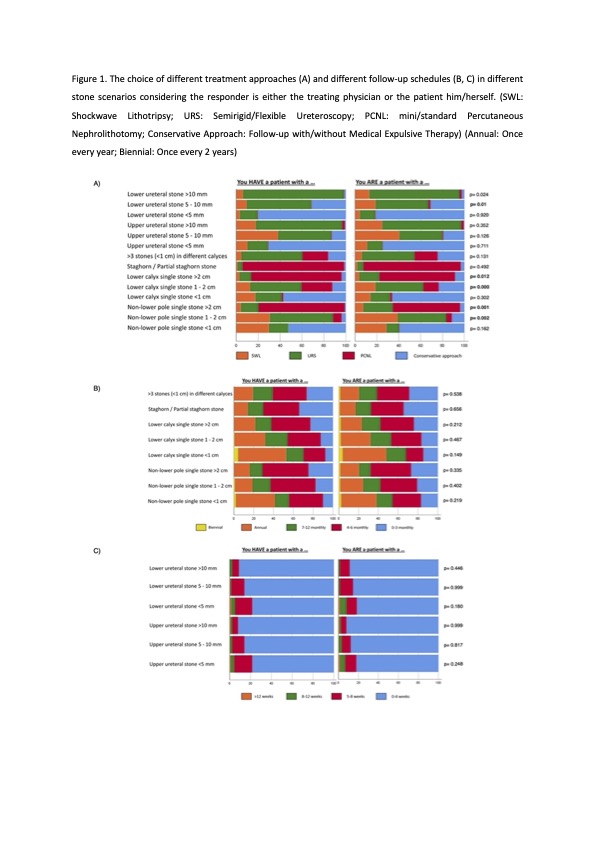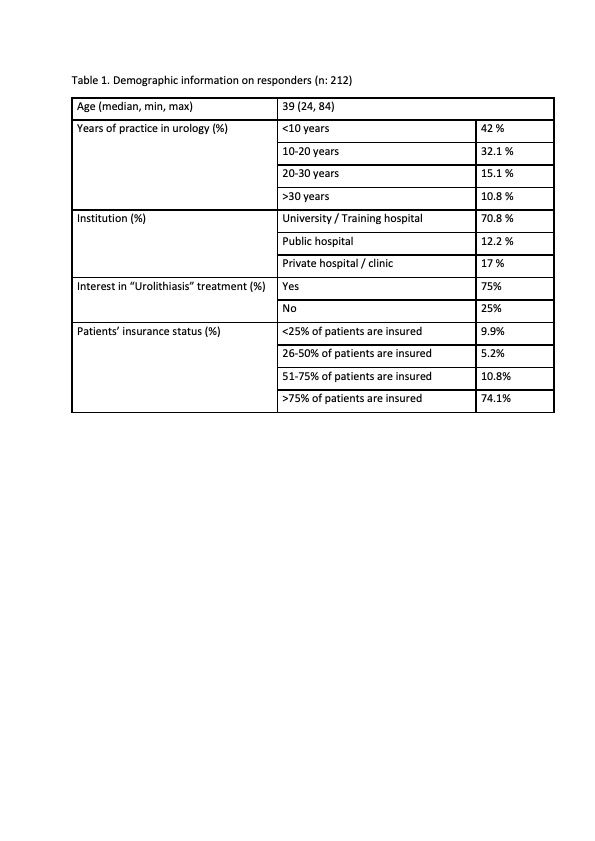Back
Poster, Podium & Video Sessions
Podium
PD55: Stone Disease: Surgical Therapy (including ESWL) IV
PD55-05: Worldwide Survey on the Current Practice of Asymptomatic Urinary Stone Management: A Survey from EAU, Young Academic Urologists (YAU), Endourology and Urolithiasis Working Party
Monday, May 16, 2022
10:10 AM – 10:20 AM
Location: Room 252
Tarik Emre Sener, Istanbul, Turkey, Thomas Tailly*, Ghent, Belgium, Amelia Pietropaolo, Southampton, United Kingdom, Etienne Xavier Keller, Zurich, Switzerland, Yiloren Tanidir, Istanbul, Turkey, Juan Gomez Rivas, Madrid, Spain, Zeeshan Hameed, Manipal, India, Vincent De Coninck, Brasschaat, Belgium, Tzevat Tefik, Kemal Sarica, Istanbul, Turkey, Ali Serdar Gozen, Heilbronn, Germany, Andreas Skolarikos, Athens, Greece, Olivier Traxer, Paris, France, Bhaskar Somani, Southampton, United Kingdom

Thomas Tailly, MD, PHD (he/him/his)
University Hospital Ghent
Podium Presenter(s)
Introduction: Management of asymptomatic kidney stones is a topic of ongoing debate with follow-up and treatment guidelines based on low-level evidence. Our aim was to evaluate current management of asymptomatic urinary stones.
Methods: A 70-question survey was designed in collaboration with EAU, Young Academic Urologists (YAU), Section of Uro-Technology (ESUT) and Section of Urolithiasis (EULIS) groups and distributed. Responders filled out several clinical scenarios either as counselling urologists, or as patients themselves.
Results: A total of 212 (30.2%) responses were obtained. Median responder age was 39 years. Demographic information is given in table 1. 159 (75%) responders were interested in “urolithiasis”. 175 (82.5%) had never experienced a renal colic and 89.6% had never undergone any kind of urolithiasis treatment.
Overall, urologists as patients themselves opted significantly more frequently for a conservative approach (29% vs. 25%) or SWL (17% vs. 14%), and significantly less frequently for a URS (35% vs. 39%) or PCNL (19% vs 23%), compared to what urologists would recommend to their patients (p < 0.001) (Figure 1A).
Of all demographic parameters, having had a renal colic was an independent predictor of an interventional approach (OR 1.5, 95% CI 1.1-2.0; p=0.01), whereas having had an intervention was an independent predictor of a conservative approach (OR 1.01, 95% CI 1.01-1.19; p=0.04).
Overall, no significant differences in follow-up schedules were found between urologists and urologists as patients themselves (Figure 1B and 1C). Only 19% of all kidney stones were adjourned for follow-up within 3 months, compared to 89% for ureteral stones (p < 0.001).
Conclusions: Current treatment and follow-up patterns of asymptomatic urinary stones are in agreement with international guidelines on symptomatic stones. Urologists tend to choose the lesser invasive treatment option as a patient themselves, compared to what they choose for their patients.
Source of Funding: -


Methods: A 70-question survey was designed in collaboration with EAU, Young Academic Urologists (YAU), Section of Uro-Technology (ESUT) and Section of Urolithiasis (EULIS) groups and distributed. Responders filled out several clinical scenarios either as counselling urologists, or as patients themselves.
Results: A total of 212 (30.2%) responses were obtained. Median responder age was 39 years. Demographic information is given in table 1. 159 (75%) responders were interested in “urolithiasis”. 175 (82.5%) had never experienced a renal colic and 89.6% had never undergone any kind of urolithiasis treatment.
Overall, urologists as patients themselves opted significantly more frequently for a conservative approach (29% vs. 25%) or SWL (17% vs. 14%), and significantly less frequently for a URS (35% vs. 39%) or PCNL (19% vs 23%), compared to what urologists would recommend to their patients (p < 0.001) (Figure 1A).
Of all demographic parameters, having had a renal colic was an independent predictor of an interventional approach (OR 1.5, 95% CI 1.1-2.0; p=0.01), whereas having had an intervention was an independent predictor of a conservative approach (OR 1.01, 95% CI 1.01-1.19; p=0.04).
Overall, no significant differences in follow-up schedules were found between urologists and urologists as patients themselves (Figure 1B and 1C). Only 19% of all kidney stones were adjourned for follow-up within 3 months, compared to 89% for ureteral stones (p < 0.001).
Conclusions: Current treatment and follow-up patterns of asymptomatic urinary stones are in agreement with international guidelines on symptomatic stones. Urologists tend to choose the lesser invasive treatment option as a patient themselves, compared to what they choose for their patients.
Source of Funding: -



.jpg)
.jpg)